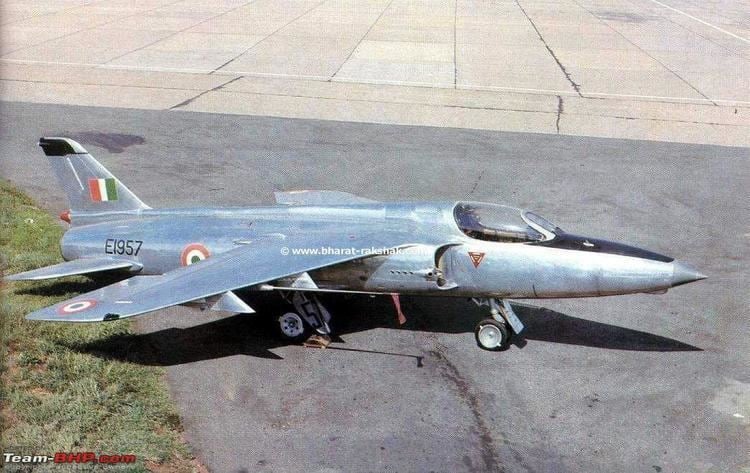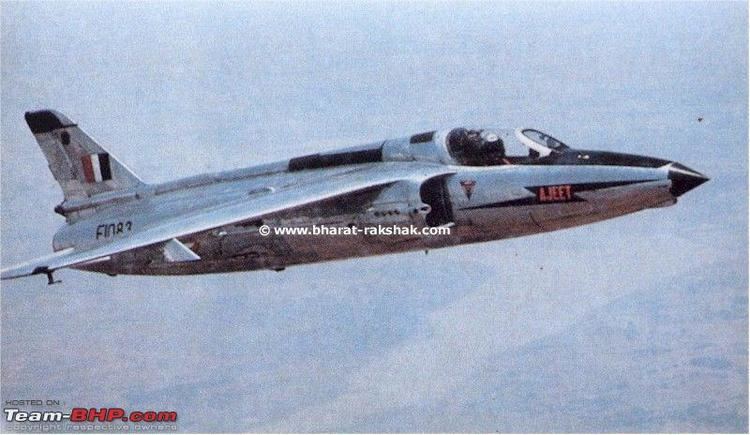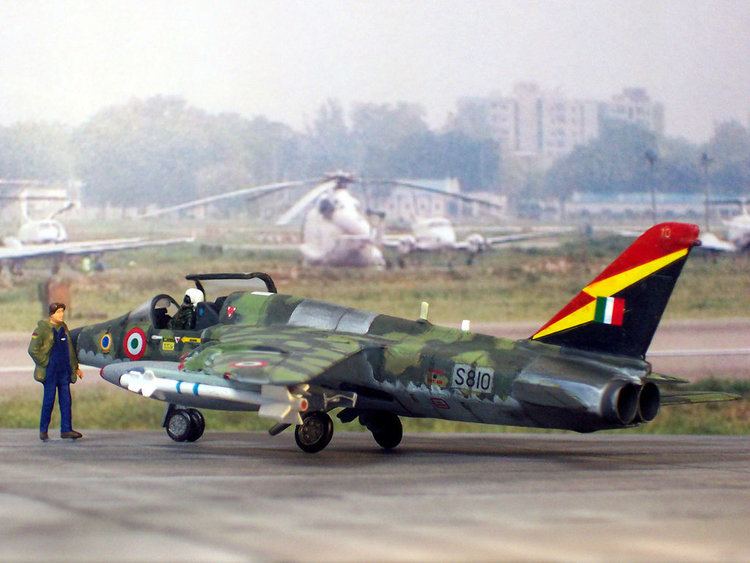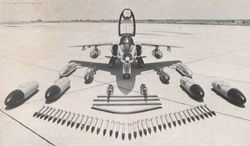Top speed 1,152 km/h Wingspan 6.73 m Weight 2,307 kg Engine type Bristol Siddeley Orpheus | Range 172 km Length 8.74 m First flight 1982 | |
 | ||
The hal ajeet british folland gnat fighter
The HAL Ajeet (Sanskrit: अजित, for Invincible or Unconquerable) was a development of the British Folland Gnat fighter that was built under licence in India by Hindustan Aeronautics Limited.
Contents
- The hal ajeet british folland gnat fighter
- Design and development
- Variants
- Operators
- Specifications HAL Ajeet
- References

Design and development

The Indian Air Force (IAF) operated the Folland Gnat light jet fighter from 1958, with over 200 aircraft being license built by Hindustan Aeronautics Limited (HAL). The aircraft proved successful in combat in both the 1965 and the 1971 War with Pakistan, both in the low-level air superiority role and for short range ground attack missions, while being inexpensive to build and operate. It had unreliable systems, particularly the control system, however, and was difficult to maintain. The Indian Air Force therefore issued a requirement for an improved Gnat in 1972. Although the original requirement called for an interceptor, it was later modified to include a secondary ground-attack role. The aircraft was given the name "Ajeet", Sanskrit for "Invincible" or "Unconquered".
The changes from the original Gnat were considerable. They included:


Hindustan Aeronautics Limited modified the final two Gnats on the production line as prototypes for the Ajeet, with the first one flying on 6 March 1975, with the second following on 5 November. Testing proved successful of the Ajeet, and it become the first production aircraft flew on 30 September 1976. Visually, the Ajeet appeared similar to the Gnat, with the presence of two extra hardpoints being the only obvious distinguishing features from the older aircraft.
The Ajeet entered service with the IAF in 1977 and was retired in 1991. It never saw combat.

A HAL project for a trainer based on the Ajeet was begun, leading to the initial flight of a prototype in 1982. Unfortunately this aircraft was lost in a crash later that year. A second prototype flew the following year, followed by a third. But a lack of government interest and the imminent phaseout of the aircraft meant no more examples were produced. The two surviving aircraft were sent to the only unit in the IAF operating the Ajeet, No.2 Squadron. The aircraft served with the Squadron until the phaseout of the Ajeet in 1991. Survivors are listed at List of surviving Folland Gnats.
Variants
Operators
Specifications (HAL Ajeet)
Data from Jane's All The World's Aircraft 1982-83
General characteristics
Performance
Armament
